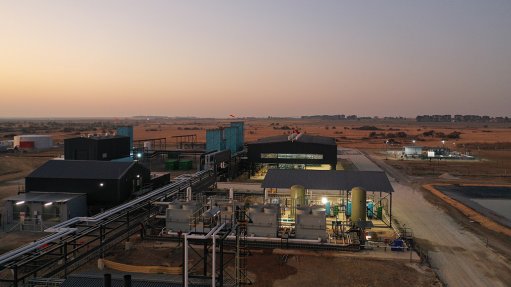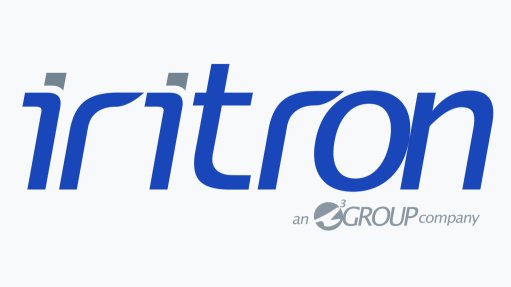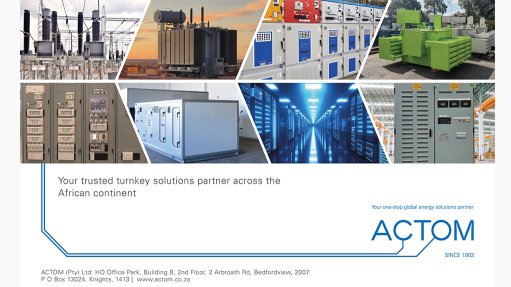Berg Estuary designated as a wetland of international importance
The Berg Estuary, situated near St Helena Bay where the Berg river flows into the sea, in the Western Cape, was declared as a Ramsar Site under the Convention on Wetlands of International Importance, in time for the marking of World Wetlands Day on February 2.
“The declaration of South Africa’s twenty-eighth Ramsar site is an indication of the importance of conserving and protecting these unique environments that are considered super ecosystems because of their contribution to the provision of water, and because they provide habitats to a large variety of migratory birds, especially water birds,” said Forestry, Fisheries and the Environment Minister Barbara Creecy.
The Berg river forms one of only four estuaries on the West Coast of Southern Africa that always have water. This is in addition to the main estuarine channel, which is a floodplain encompassing five major wetland types of importance to 250 species of waterbirds. These are ephemeral pans, commercial saltpans, riparian marshes, saltmarshes – which are the third largest on the Cape coast – and intertidal mudflats.
The estuary spans an area of 1 162 ha, and the West Coast fishing village is situated in the Bergrivier local municipality.
The Berg Estuary, which is one of 290 estuaries in South Africa, is the second wetland of international importance to be declared in the country in two years. In 2021, the Ingula Nature Reserve in the northern Drakensberg was declared the country’s twenty-seventh Ramsar Site.
“Although estuaries comprise less than 2% of South Africa’s territory, these highly productive ecosystems contribute R4.2-billion a year to the South African economy. They are focal points for development, tourism and recreation, as well as important for supporting biodiversity, livelihoods and marine fisheries.”
The Berg Estuary, in particular, contributes about 60% of the estuarine habitat on the West Coast and is therefore extremely important in terms of the biodiversity, cultural and economic activities that it supports, the Department of Forestry, Fisheries and the Environment said.
“By addressing threats to the productive use of land and water, and the functioning of natural systems, South Africa not only supports sustainable livelihoods for local people through integrated landscape management that strives for resilient social-ecological systems, but secures strategic water resources and wetlands.
“By building a new deal for people and nature, work is being done to secure strategic water sources and wetlands in South Africa, which is a water-scarce country. These strategically important areas supply water that sustains 60% of the country’s population, more than 90% of urban water users, 67% of national economic activity and 70% of irrigated agriculture,” Creecy pointed out.
However, despite their significance to human life, wetlands are threatened nationally and globally.
The 2018 National Biodiversity Assessment found that at least 79% of South Africa’s wetland ecosystems are threatened. Of these, 48% of wetland ecosystem types are critically endangered, 12% are endangered, 5% are vulnerable and 35% are least threatened, making wetlands the most threatened ecosystems of all in South Africa. More than 70% of South Africa’s wetland ecosystem types have no protection and only 11% are well-protected.
“The report had emphasised the role of rivers, wetlands and their catchments as crucial ecological infrastructure for water security and often complementing built infrastructure. Major threats to these freshwater systems include over-extraction of water, pollution, invasive alien species, habitat loss, land-use change and climate change.
“As a signatory to the Ramsar Convention, South Africa remains committed to working towards the wise use of all wetlands through effective land use planning and the development of appropriate policies and legislation, management actions, and public education to protect these natural purifiers of water resources,” Creecy said.
Article Enquiry
Email Article
Save Article
Feedback
To advertise email advertising@creamermedia.co.za or click here
Comments
Press Office
Announcements
What's On
Subscribe to improve your user experience...
Option 1 (equivalent of R125 a month):
Receive a weekly copy of Creamer Media's Engineering News & Mining Weekly magazine
(print copy for those in South Africa and e-magazine for those outside of South Africa)
Receive daily email newsletters
Access to full search results
Access archive of magazine back copies
Access to Projects in Progress
Access to ONE Research Report of your choice in PDF format
Option 2 (equivalent of R375 a month):
All benefits from Option 1
PLUS
Access to Creamer Media's Research Channel Africa for ALL Research Reports, in PDF format, on various industrial and mining sectors
including Electricity; Water; Energy Transition; Hydrogen; Roads, Rail and Ports; Coal; Gold; Platinum; Battery Metals; etc.
Already a subscriber?
Forgotten your password?
Receive weekly copy of Creamer Media's Engineering News & Mining Weekly magazine (print copy for those in South Africa and e-magazine for those outside of South Africa)
➕
Recieve daily email newsletters
➕
Access to full search results
➕
Access archive of magazine back copies
➕
Access to Projects in Progress
➕
Access to ONE Research Report of your choice in PDF format
RESEARCH CHANNEL AFRICA
R4500 (equivalent of R375 a month)
SUBSCRIBEAll benefits from Option 1
➕
Access to Creamer Media's Research Channel Africa for ALL Research Reports on various industrial and mining sectors, in PDF format, including on:
Electricity
➕
Water
➕
Energy Transition
➕
Hydrogen
➕
Roads, Rail and Ports
➕
Coal
➕
Gold
➕
Platinum
➕
Battery Metals
➕
etc.
Receive all benefits from Option 1 or Option 2 delivered to numerous people at your company
➕
Multiple User names and Passwords for simultaneous log-ins
➕
Intranet integration access to all in your organisation
















